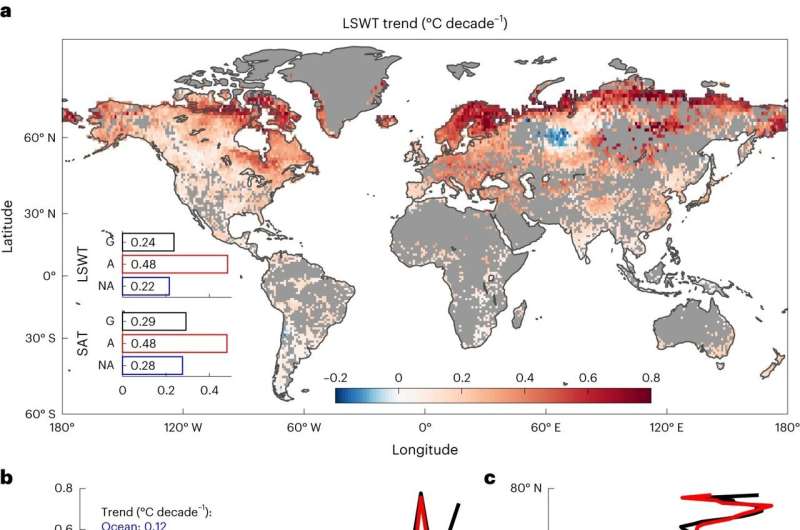This article has been reviewed according to Science X's editorial process and policies. Editors have highlighted the following attributes while ensuring the content's credibility:
fact-checked
peer-reviewed publication
trusted source
proofread
Research finds high-latitude lakes warming at a rapid pace

Half the world's lakes are located at high latitudes, and new research in the journal Nature Water has found that they are warming at a rapid pace.
Building on previous work revealing rates at which global lake surface temperatures are rising, Dr. Iestyn Woolway of Bangor University and collaborators in China, have extended our understanding of lakes in high latitudes (>60° N), by including a larger number of lakes and studying their temperatures.
The study used both satellite data and numerical modeling to analyze lake surface water temperatures of 92,245 lakes.
Though lakes are getting warmer at a rate of 0.24 degrees Celsius per decade from 1981 to 2020, this is still slower than the change in surface air temperature (0.29 degrees Celsius per decade) during the same period. The main reason is that higher air temperature increases evaporation, which, in turn, cools the lake surface.
The study also found that lakes at high latitudes, are warming fastest. This is because lakes in these regions are more sensitive to changes in the climate.
Dr. Iestyn Woolway, NERC Independent Research Fellow and Reader at Bangor University says, "Lakes are important ecosystems. They provide a variety of benefits, including drinking water, recreation, and habitat for fish and other aquatic life. Lake warming is a serious threat to these fragile ecosystems, as it can lead to changes in water quality, increased algal blooms, and fish kills. Lakes also influence wider global geophysical processes such as weather patterns, hydrological cycles, and the distribution of freshwater resources."
"The new study highlights the need to reduce greenhouse gas emissions in order to mitigate the impacts of lake warming. It also provides valuable data that can be used to study the effects of lake warming and develop adaptation strategies."
More information: Yan Tong et al, Global lakes are warming slower than surface air temperature due to accelerated evaporation, Nature Water (2023). DOI: 10.1038/s44221-023-00148-8
Journal information: Nature Water
Provided by Baylor University




















